

Spark Plug Failure Analysis
Spark Plug Failure Analysis
This page contains images and brief descriptions of common spark plug failures and potential causes.
 |
Normal appearance Light brown, tan or grey firing end. A good indicator that the plug is functioning correctly and general engine conditions are good. |
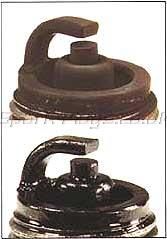 |
Dry and wet foulingFouling, either dry (top - matt black, sooty) or wet (bottom - gloss black, sticky), Can be caused by many different conditions. Carbon deposits build up when the plug fails to fire correctly and burn them off. Air/fuel mixture too rich, choke stuck on, electrical problem, extended periods of low speed driving, plug heat range too cold. All should be investigated |
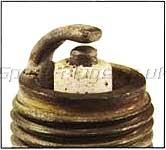 |
OverheatingWhen overheating occurs, deposits which have accumulated on the insulator tip may melt and give the tip a glazed appearance Possible causes are overadvanced ignition timing, air/fuel mixture too lean, water or oil level too low, plugs not fitted (tightened) correctly, plug heat range too hot. |
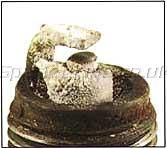 |
DepositsInsulator nose and electrodes encrusted with a build up of deposits - usually off white in colour. This is often caused by oil leakage through the piston rings or valve seals. Could be due to the wrong viscosity of oil being used. |
 |
Lead FoulingLead deposits on the insulator nose. These are usually a yellowish brown in colour. Lead content of petrol used is too high or lead additives are being used. Try petrol with a lower lead content. |
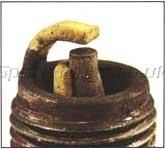 |
BreakagePhysical damage to the insulator nose. Usually caused by abnormal thermal expansion in the combustion chamber. Maybe thermal heating or cooling shock. Causes as for overheating above. Faulty fuel injection is a prime candidate, cycling from overheated (no fuel) to overcooled (too much fuel) will cause thermal shock fracture. |
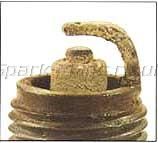 |
End of normal lifeGrowth of the plug gap during a plug's working life is normal. However, the increased gap will mean the spark is less efficient and hence fuel is wasted and strain is put on the ignition system. Plugs are at the end of their servicable life. Replace plugs as a set. |
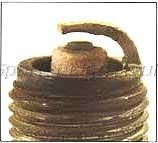 |
Abnormal erosionThis is accelerated growth of the gap Due to the effects of corrosion, oxidation and reaction with lead in petrol. |
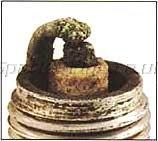 |
MeltingThe electrode surface will probably appear lustrous and uneven. Due to excessively high temperatures in the combustion chamber. Causes as for overheating above. |
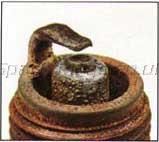 |
Erosion, Corrosion, OxidisationThe surfaces of the electrodes are rough, in extreme circumstances the electrode material will have oxidised to the point of turning green Possibly due to age, vehicle standing for a long time without use. |
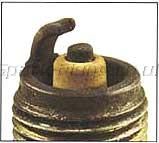 |
Lead ErosionThe ground electrode may appear worn away, the central electrode may appear chipped and the insulator nose may take on a yellowish brown colour. This is due to chemical reaction between the nickel alloy electrodes and the lead compounds in petrol. |



 Open: 9am - 5pm MON - FRI
Open: 9am - 5pm MON - FRI

